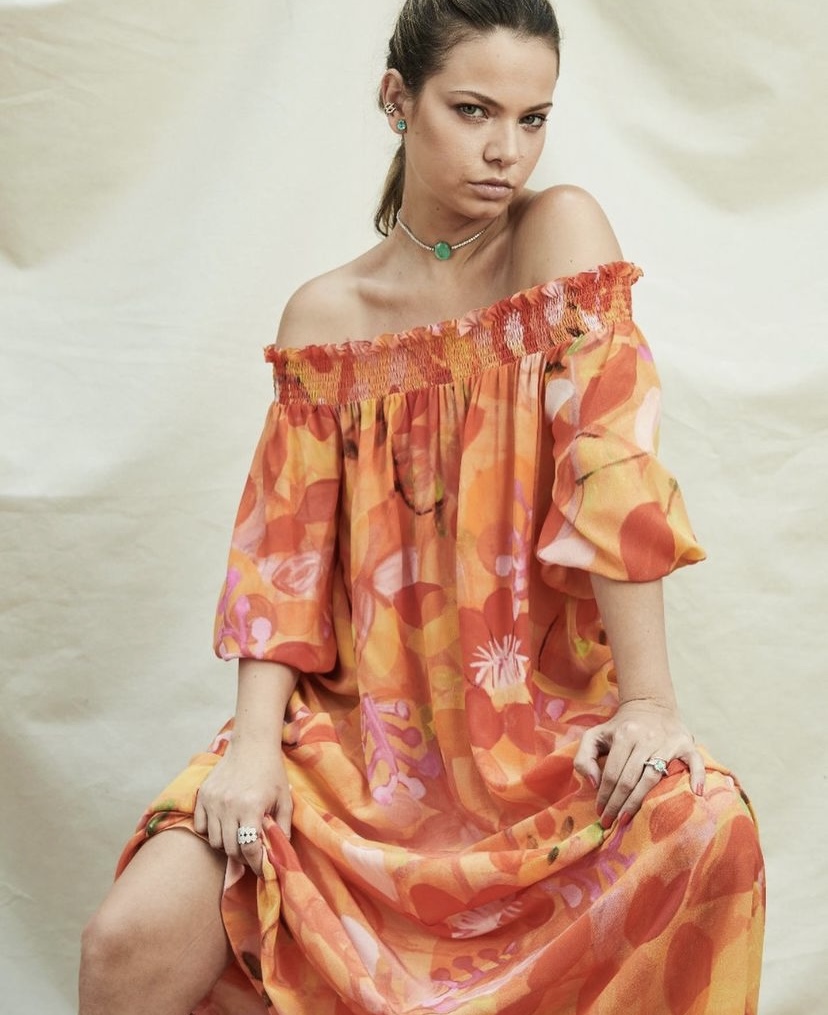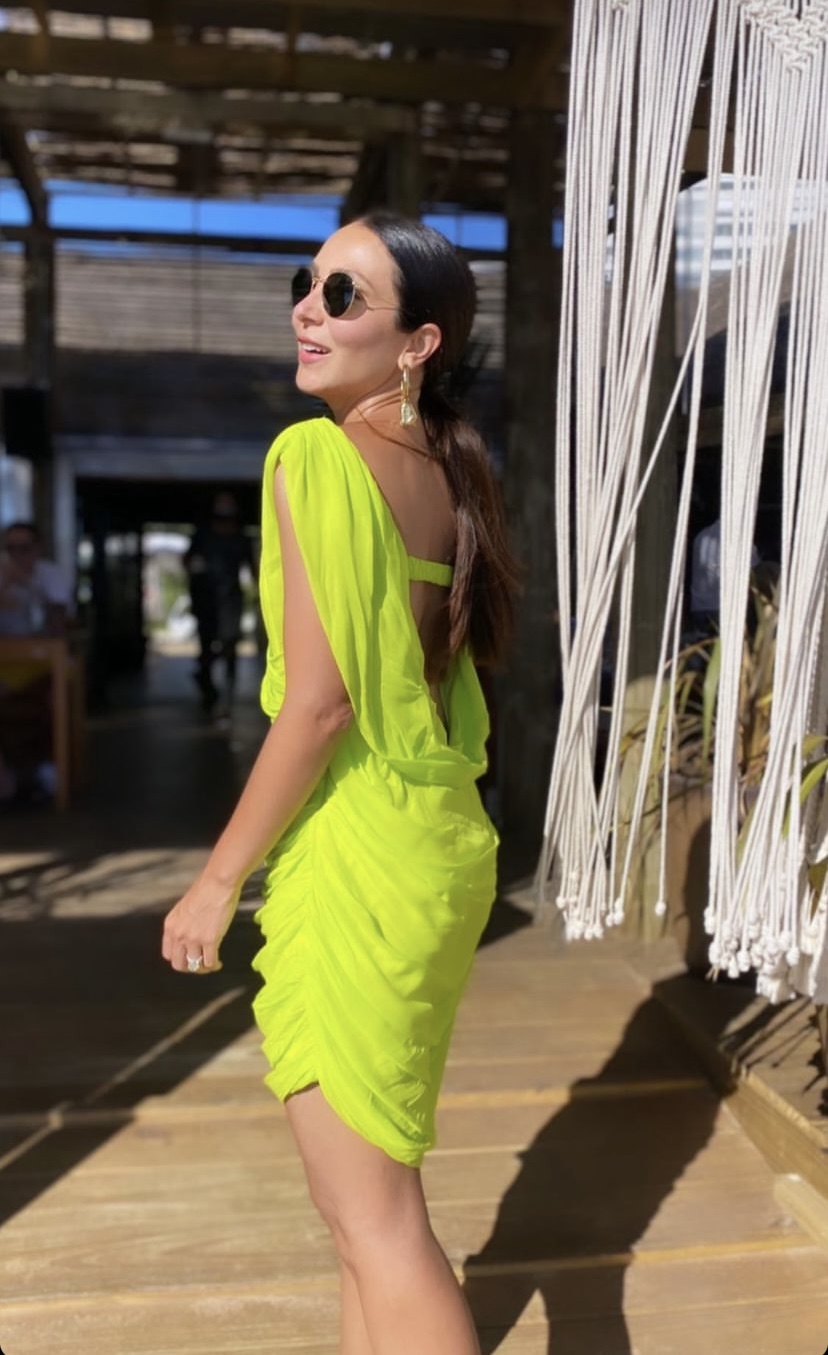
- Fashion
Kika Simonsen: Brazilian Designer Creates Forever Style in Biodegradable Fabric
“Visiting the rainforests of Brazil, I was motivated by the fauna that I saw. I want my children to be able to visit there and enjoy that nature, all the species that are represented there, especially the ones that are near extinction. I am motivated that future generations can live in harmony with nature.” So says fashion designer, Kika Simonsen, from her studio in Sao Paulo, Brazil, via Zoom.
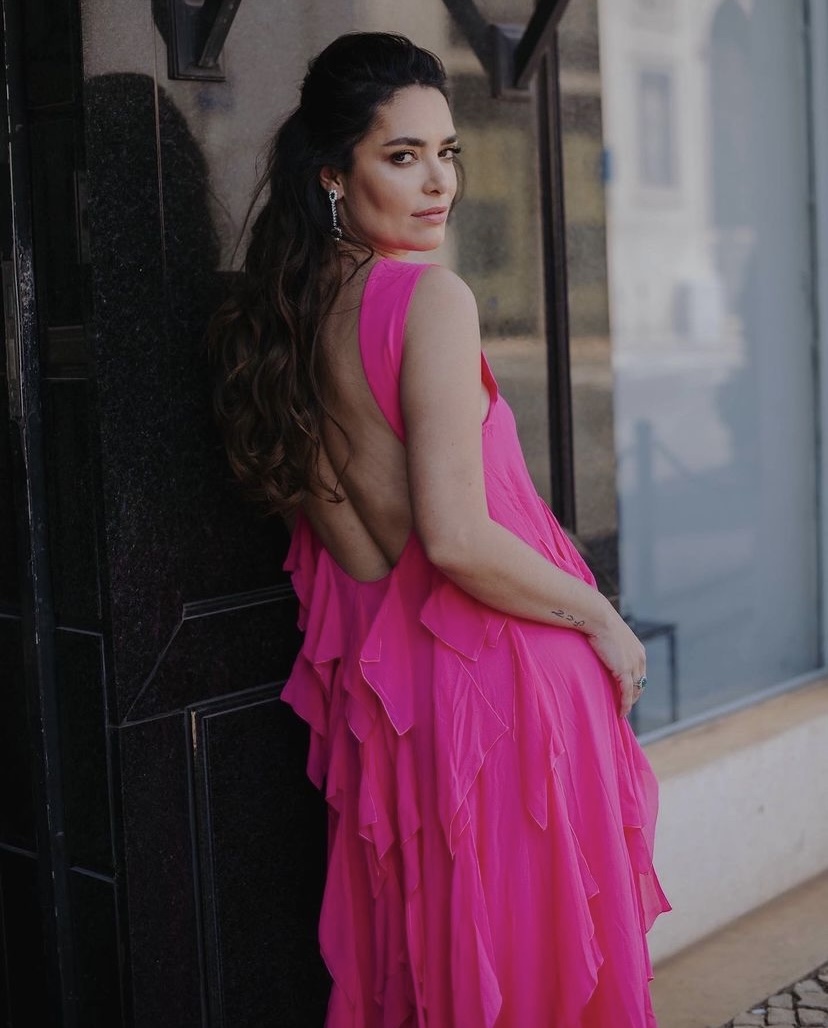
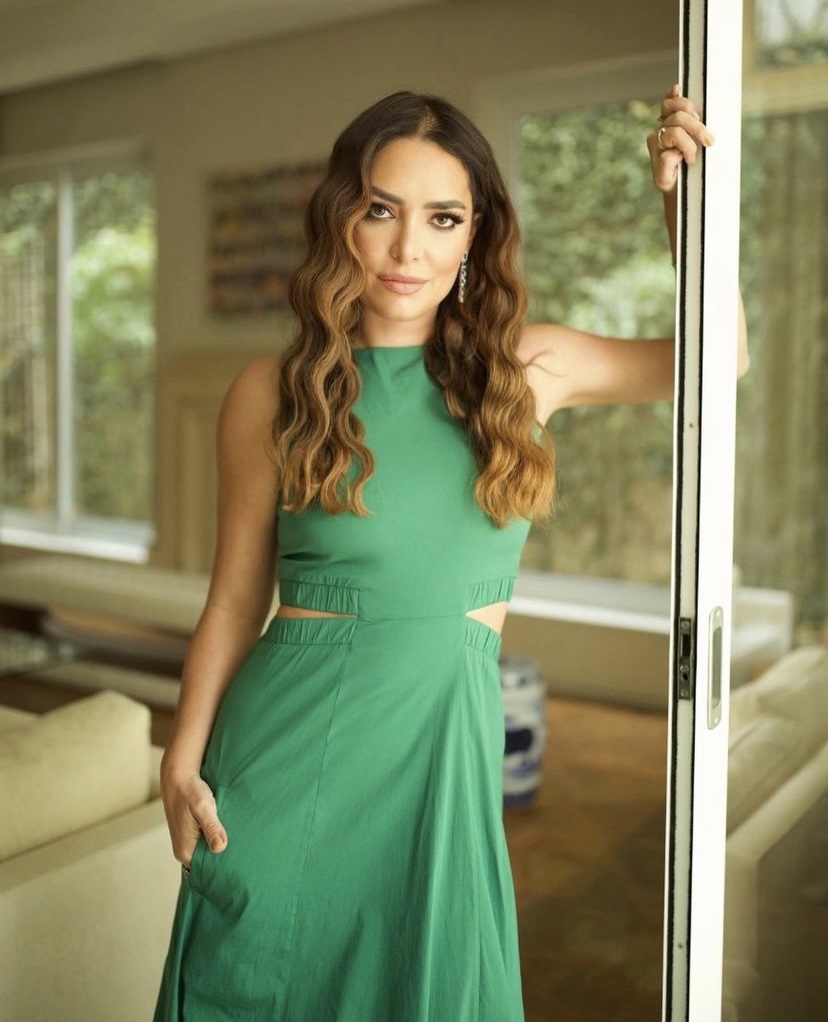
Kika Simonsen’s fashion range makes you remember the idea of magic. Sunsets and sunrises, and the subtle variations between the two natural phenomena, come to mind. A white dress with pinpoints of soluble dye resembles water sprayed into the sunshine and landing like a rainbow on the fabric. The hues are different from the ones we find repeated endlessly in the northern hemisphere.
“I wanted to create something that had a very strong Brazilian identity.” She explains, “Right now it is fall, but it’s really warm. I wanted to have a resort-wear brand, inspired by indigenous cultures,” she adds.

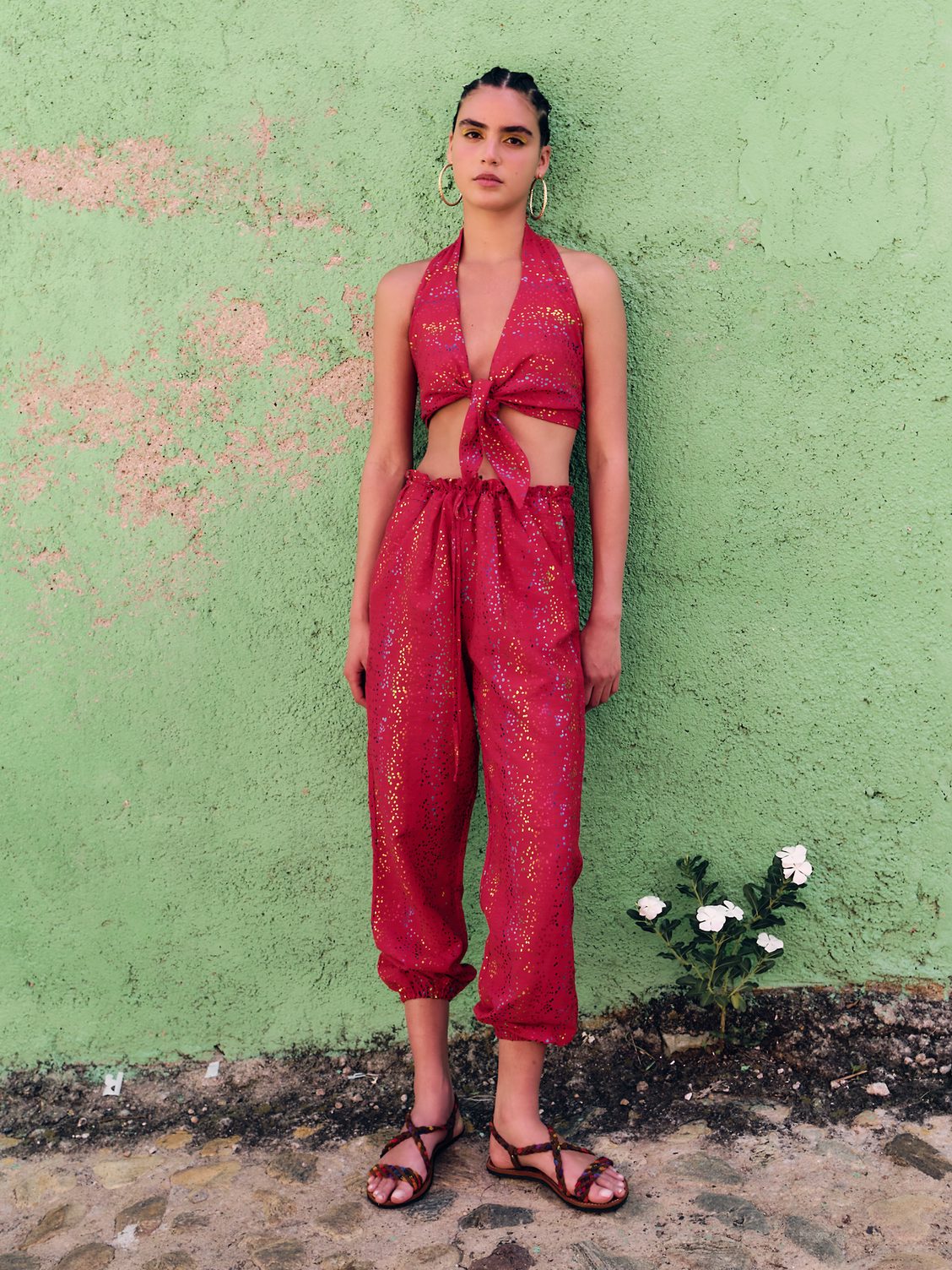
The blues come from a trip to Egypt. “I went to the tomb of queen Nefertiti and I fell in love with it. I researched her story. I couldn’t stop thinking about it until I made this collection inspired by her.” She pulls a large painting onto her lap, a duplicate of the color and pattern of her dress. “I created the blue background and all the Egyptian colors. I made it into a painting, then I made it into fabric, and then into clothing. I bring back a little of the essence of indigenous cultures and create fashion from it. Mexico, Chile, and Africa.”
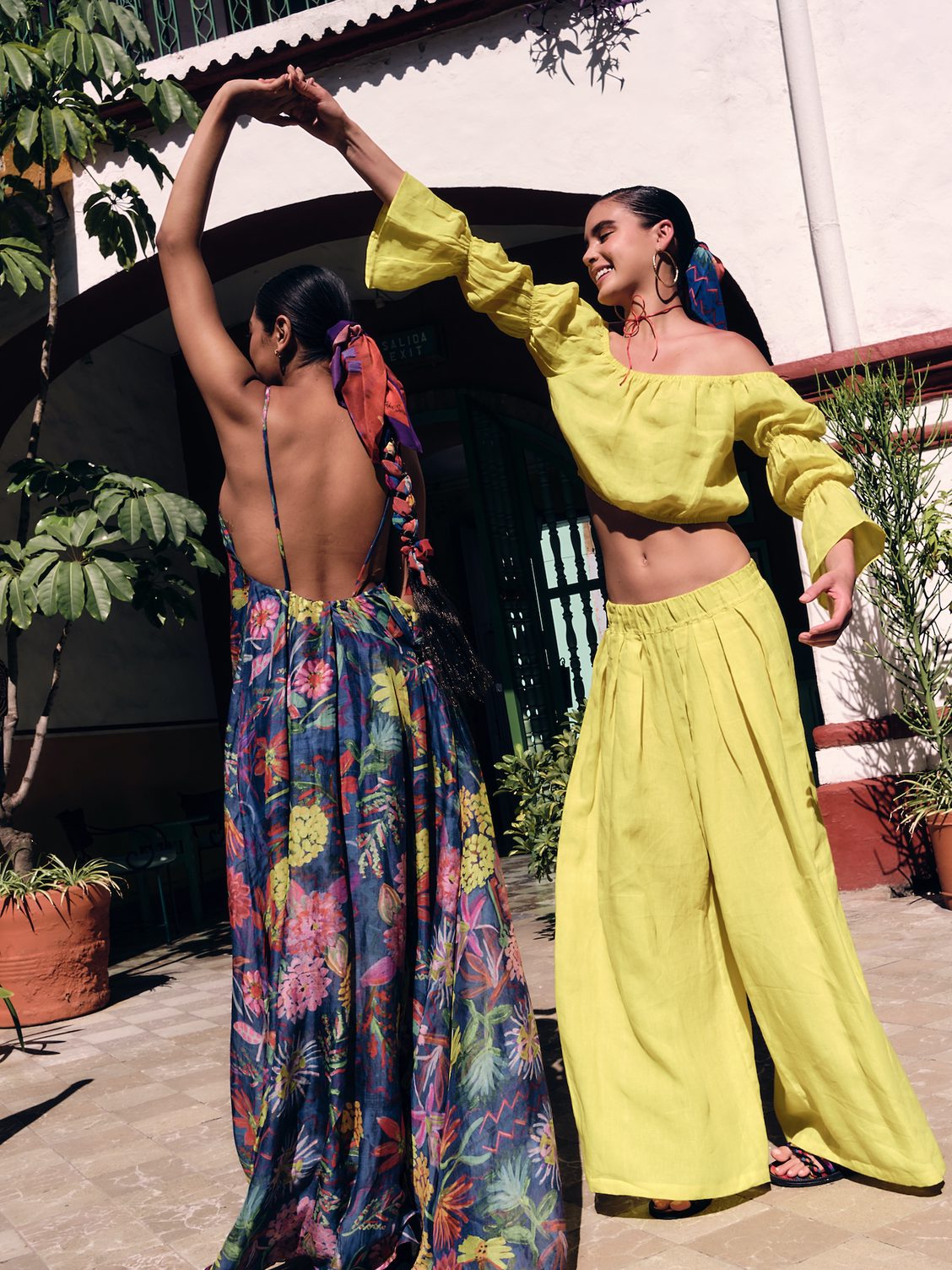
She leans over and tugs on a bolt of material. It’s the color of a flat, hot sky just after the sun has dipped below the horizon, deep brick orange. She flaps it, so the material billows and falls, as though alive. “The materials I’m working on now will be called The Sunset Prints.”
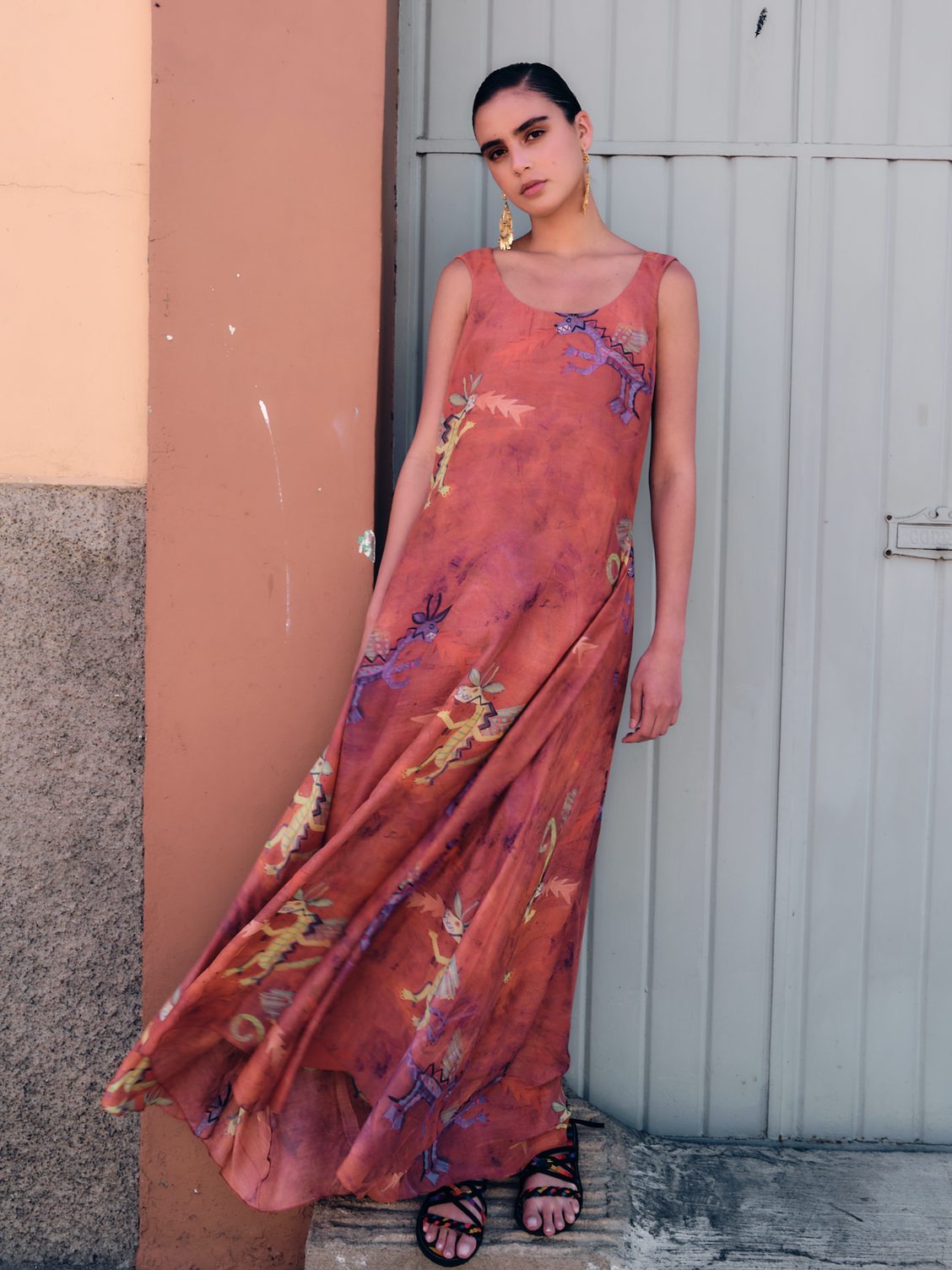
This relationship with, and inspiration of, nature, was fed by childhood visits to her father’s farm where the family bred horses. Kika recalls going to the lake with her sister and friends and resisting jet skiing. “I would ask, ‘Why are we going jet skiing for fun? Why are we polluting the lake when we don’t have to?’” She shrugs and shakes her head, as though wrestling with the idea of not thinking an action through and its detriment to the environment.
“If you have the option to drive a car that doesn’t use gas, it’s better. Of course, it’s not 100% possible to do it 100% of the time. But we should use what we can. Technology is improving a lot. Sustainability is improving every year since I began focusing on textiles that are made in Brazil.”
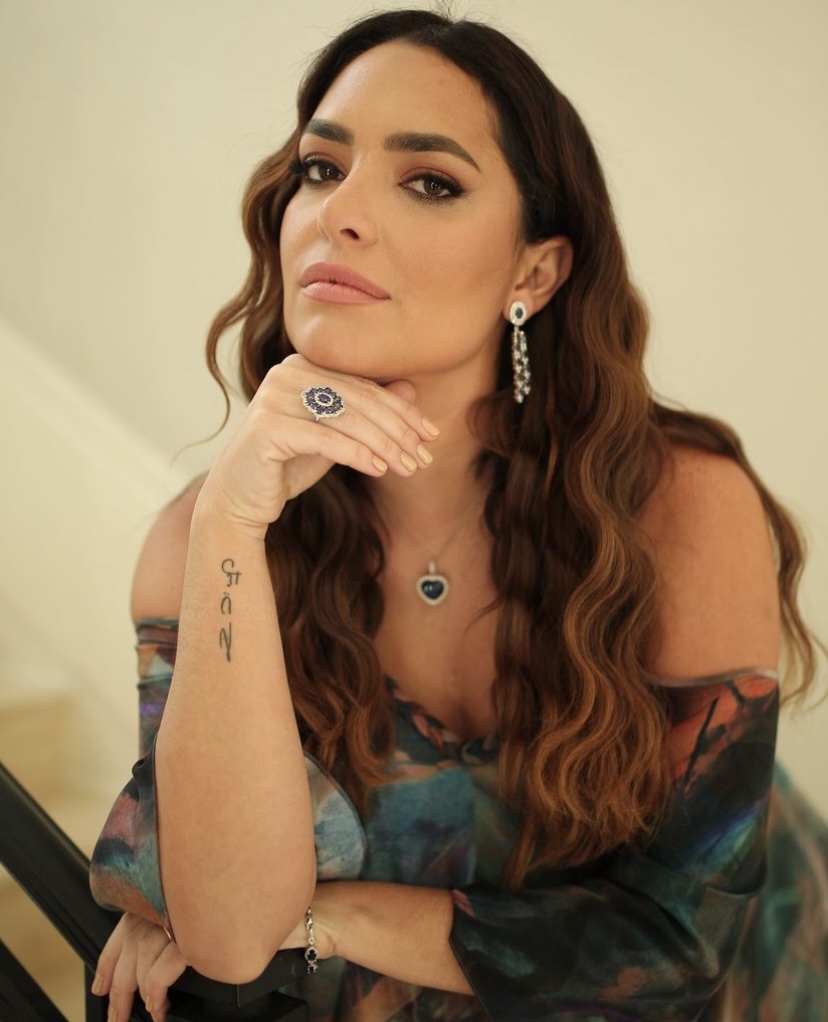
She is encouraged that European designers like Stella McCartney use sequins made from cellulose. “I would love to use that textile but it’s not available in Brazil yet. I do what I can.”
Doing what she ‘can’ amounts to a lot more than most designers take on. It also serves as an inspiration to others. “Most of the fabrics I use in my collections are recycled,” she explains. “I designed a jacket, the fabric of which is made of pieces of cotton and recycled plastic bottles. I don’t use polyester.”
When she is unable to use natural products she ensures they meet the rigor of sustainability. “The synthetics I do use will be biodegradable within four years. I also use blend textiles that are biodegradable within the fabric.”
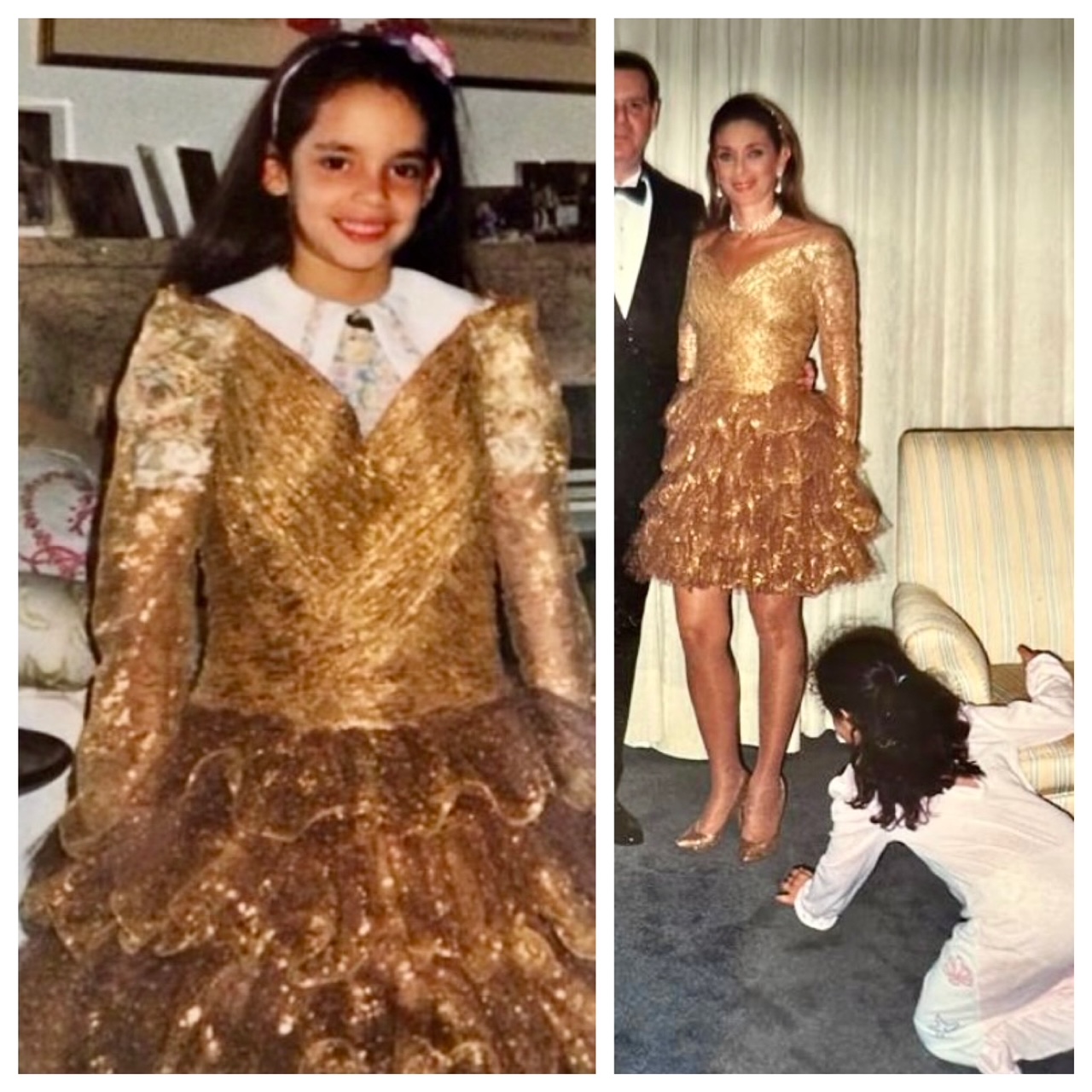
For the Brazilian beauty, her love affair with fashion started as a little girl climbing into her mother’s clothes. “It was absolutely my mother’s wardrobe that got me interested in clothing. I recall it so vividly,” she recounts with a smile. “My mother had this short golden dress covered in sequins. She has a picture of me wearing it.” She laughs at the memory. “I recall her going out one night, wearing it, and it reminded me of a fairy tale. She looked like Beauty from Beauty and the Beast. She loved fashion. She, in that dress, is a special memory.”
Initially, Kika was unsure if she wanted to be a fashion designer or an artist. “I ended up becoming both. I love everything that has to do with transformation. I’m very good with my hands and very creative. I’ve always loved textiles, paintings, and things that are linked to the female body.”
“I’d experiment, drawing designs before I began studying fashion and art. I started with textiles, which I studied at college. I graduated in graphic design. I learned how to make prints. Since I am also a painter, I decided to design my own print. It was an experiment. I printed the design on pure silk and made a dress. It was at that moment I realized: I want to be a designer. I started studying fashion. That was 10 years ago. I started creating fabrics and segued into creating my own eponymous label.”
Kika has been inspired, since that moment of creativity and functionality, by different cultures that we now see incorporated into her designs. Which returns us to her drive to take the ecologically conscious path.
“I use recycled plastics and paper for packaging, labels, and bags. The water, used when creating the washes with biodegradable dyes, goes through a cleansing process twice before being returned to the river.”
These sustainable incorporations are not inexpensive. She notes sagely, “It does add cost, but it also adds value. If the clothes do go to a landfill, ultimately they will break down within four years. That’s progress.”
She laughs dismissively at the suggestion that biodegradable means the clothing is less durable. “No, the clothing sustains in your closet with normal care, but will decompose, unlike the synthetic fabrics many western clothes are made of.”
That is a footprint more designers need to follow.
